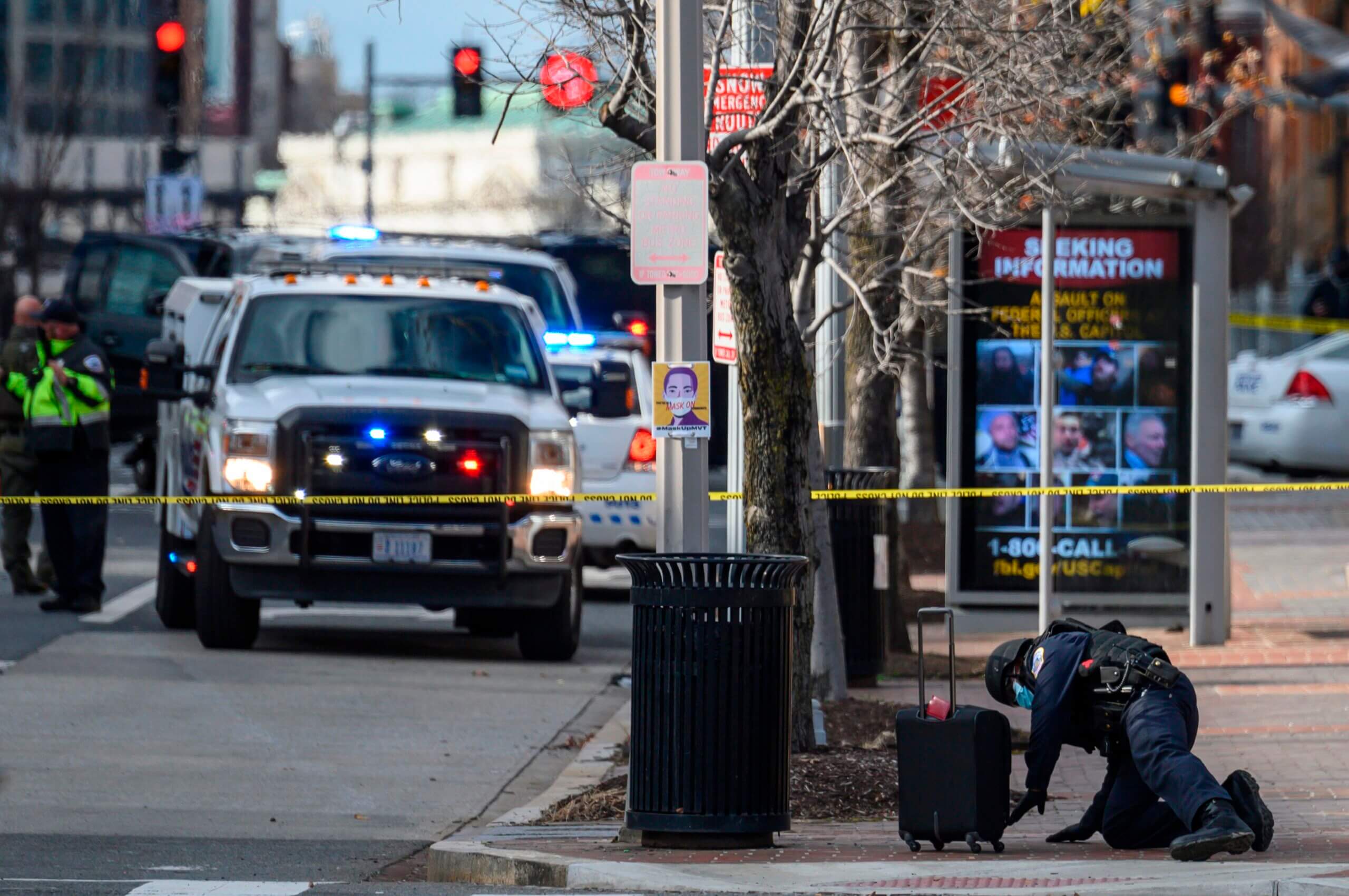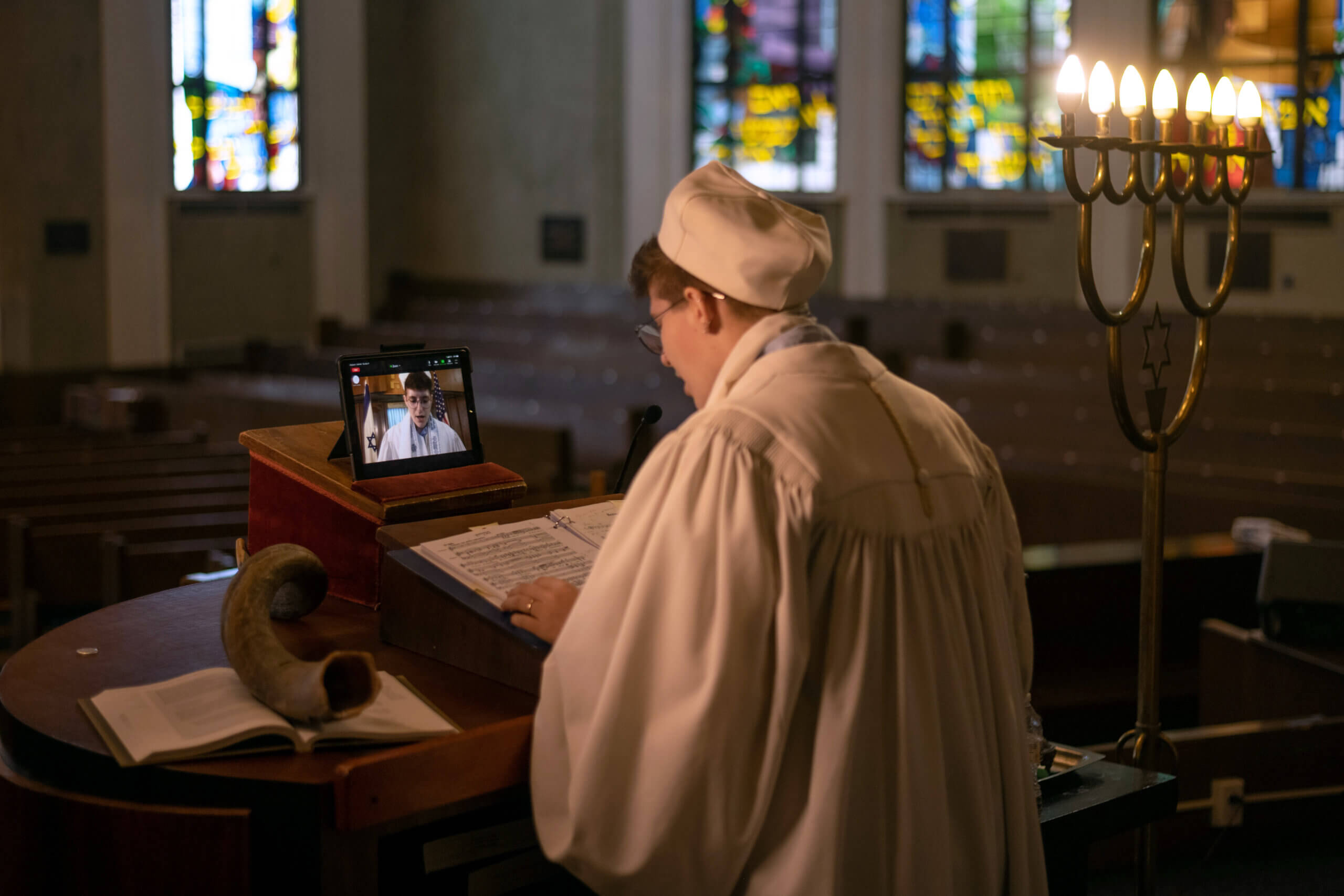White supremacists have recently attempted to disrupt services at dozens of synagogues by calling in false reports to police. Sometimes they claim that there was a bomb in the building or that a mass shooting is taking place.
The wave of threats is ongoing. A Bay Area synagogue was forced to evacuate Friday following false report to the local sheriff’s department. Two guest speakers — Congresswoman Anna Eshoo and Jeremy Ben-Ami, the president of J Street — were among those escorted out.
Related
Experts say that the extremists behind the calls target institutions that post live video of their services online. They hope to watch in real-time as police burst into the sanctuary to respond to the false threats.
Given light attendance at summer Shabbat services, the cases where congregations have been forced to evacuate had limited impact. But that could change this month, with High Holiday services drawing the largest crowds of the year.
Here are some steps that security professionals say you can take to keep your congregation safe:
Before a potential swatting or bomb threat incident occurs:
- Make sure your synagogue has a security committee and security plan
- Establish good working relationships with your local law enforcement departments. Let them know High Holiday services draw big crowds and that synagogues are facing both swatting and bomb threats
- Consider asking law enforcement to have a presence at your High Holiday services
- Alert your congregation’s leadership, as well as ushers and greeters, that such incidents might occur
- Develop a plan in advance so everyone can evacuate safely if necessary
Tip: Some cities allow individuals to place their address in a police database of locations that may be targeted by swatting. The list is intended to help officers know they should proceed with caution. However, synagogues might be reluctant to use these tools because they also may face real threats requiring a quick police response.
 A member of the local bomb squad checks a suspicious bag in Washington, D.C., in 2021. There are important differences between swatting calls and bomb threats, even though the two share some characteristics. Photo by Getty Images
A member of the local bomb squad checks a suspicious bag in Washington, D.C., in 2021. There are important differences between swatting calls and bomb threats, even though the two share some characteristics. Photo by Getty Images
What to do during a swatting incident or after receiving a bomb threat?
Swatting incidents and bomb threats are alike, in that both seek to disrupt synagogue activities. But there are key differences.
Swatting involves someone making a false report to police. These are intended to provoke a significant response that could catch a Jewish congregation by surprise. For example, over the summer police received calls falsely reporting that a suicidal individual was barricaded inside of a New Jersey synagogue bathroom. Another caller claimed that there was an active shooter at a synagogue in Texas. Law enforcement officers who respond to these incidents may act aggressively, because they could have been told that people inside the synagogue may pose a threat to congregants.
Related
Bomb threats can also involve false reports made to police. But, unlike swatting incidents, the report can be made directly to a synagogue rather than to police. That means staff or volunteers must determine how to respond. Bomb threats also generally provoke a less aggressive response from police than, for example, false reports of a mass shooting in progress. Finally, it is usually relatively simple to determine that a swatting call relayed false information. It can take much longer to resolve a bomb threat, which may necessitate a thorough search of the building or careful examination of a suspicious item by a bomb squad. The FBI has a thorough guide on how institutions should handle bomb threats and how leaders can prepare.
Here is some advice for both situations from the FBI, Secure Community Network, and the Cybersmile Foundation:
Bomb threats
- Document: If you receive a bomb threat by phone, letter, email or in-person, make sure to document all the information. Record any calls if you can. Preserve written threats and note the wording of verbal threats when you are sure you are safe.
- Observe: Keep an eye out for suspicious items that meet the criteria of the FBI’s “HOT” acronym: “H” for hidden, “O” for obviously suspicious and “T” for not typical. Do not touch or move these items and immediately notify whoever is in charge of security decisions at your synagogue.
- Next steps: The relevant decision maker can follow the FBI’s bomb threat guidance to determine next steps, including possible evacuation or calls to the police.
Swatting
- Greeters and guards: Having a greeter or guard stationed outside the building or sanctuary can help provide accurate information to police who show up in response to a swatting call.
- Remain calm: Responding officers may believe they are dealing with a serious emergency. You can help defuse this tension by staying calm and encouraging others to do the same.
- Cooperate: If police respond to the incident aggressively, cooperate with their instructions and give them time to determine whether the report they received was false.
- Notify: As soon as it is safe to do so, notify the relevant authorities. These could include those who handle security for your communal institutions — like the local Jewish federation — and national groups like the Secure Community Network. You might also consider filing a police report, as swatting calls are typically illegal.
 Cantor Kalix Jacobson, when they were a student, sings the High Holidays services at Hebrew Tabernacle of Washington Heights. White supremacists appear to be targeting Jewish institutions that livestream their services, and while experts aren’t recommending that synagogues stop doing so there are some ways to protect the video feeds. Photo by Getty Images
Cantor Kalix Jacobson, when they were a student, sings the High Holidays services at Hebrew Tabernacle of Washington Heights. White supremacists appear to be targeting Jewish institutions that livestream their services, and while experts aren’t recommending that synagogues stop doing so there are some ways to protect the video feeds. Photo by Getty Images
How to keep your synagogue livestream safe
One thing this summer’s swatting incidents and bomb threats targeting Jewish institutions had in common was that the perpetrators appeared to be selecting synagogues that were live streaming their services. Security experts have made clear that they are not calling on congregations to stop putting live video of their services online. But there are some precautions you can take to limit access to the video feed — which could discourage bad actors by making it harder for them to watch any potential mayhem unfold.
- Zoom: The popular video conferencing service has a guide on how to keep “uninvited guests” out of your livestreams. Options include including requiring viewers to sign into an account, using a meeting passcode and “locking” the meeting so that nobody can join after it has started without permission
- Facebook Live: Many synagogues post their services on Facebook Live, and the social media platform also has options for restricting who can see these videos. They include limiting viewership based on location, and posting a live video that only members of a certain Facebook group, like one belonging to your congregation can view.
The post How to protect your congregation from swatting and bomb threats during High Holiday services appeared first on The Forward.
The post How to protect your congregation from swatting and bomb threats during High Holiday services first appeared on The News And Times – thenewsandtimes.com.
